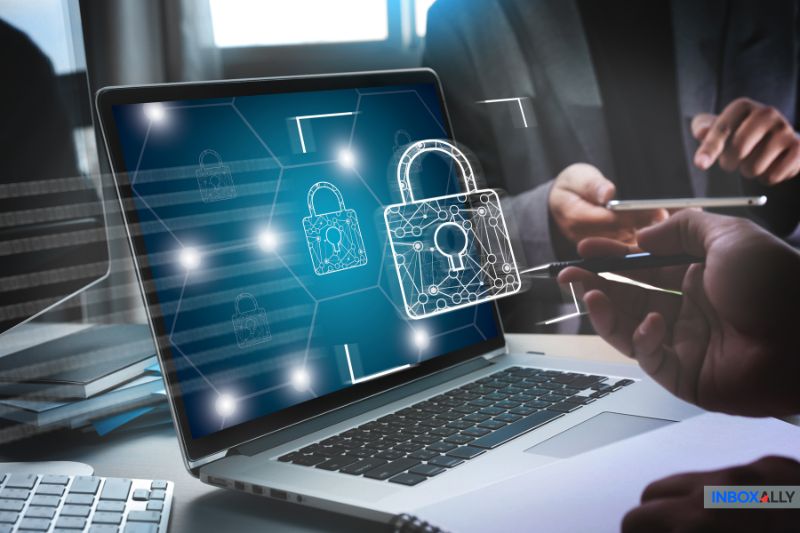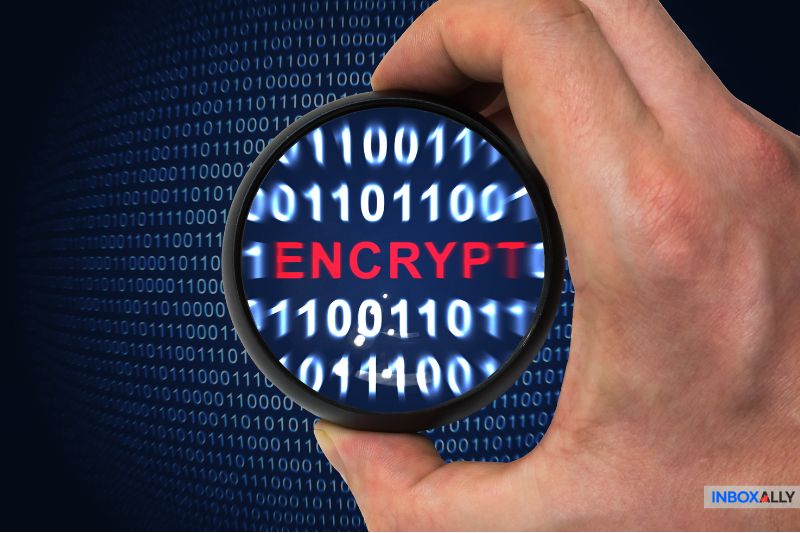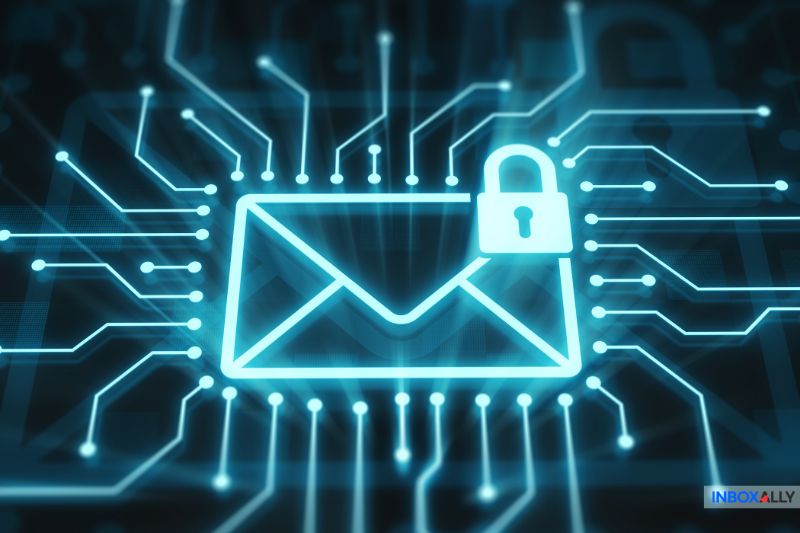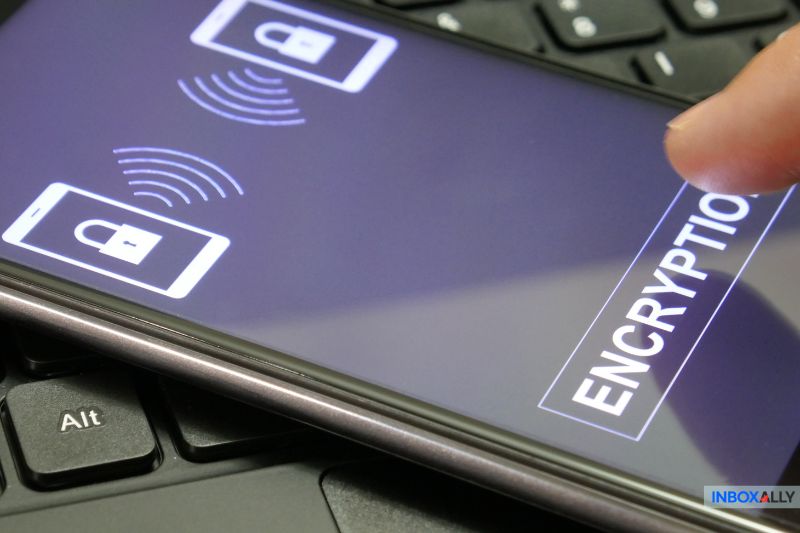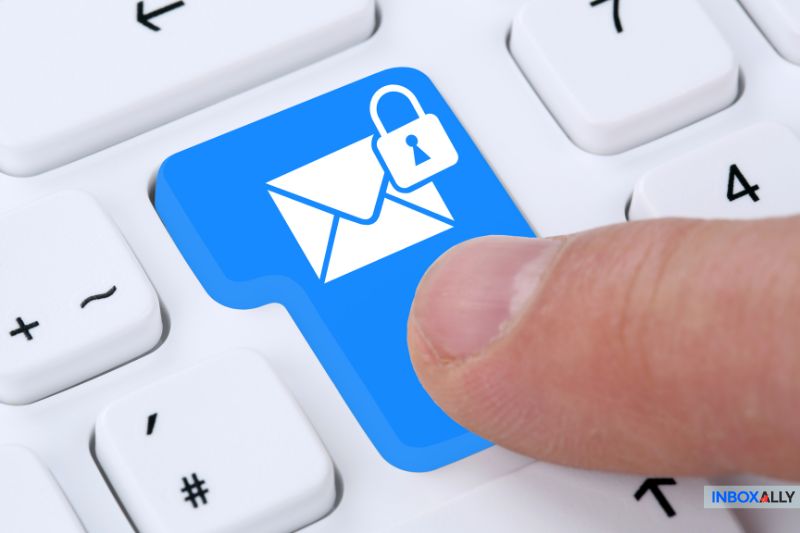Email is the thread that holds modern communication together, whether it’s managing business deals or catching up with an old friend.
But behind its ease and ubiquity lies a major vulnerability. Email systems are prime targets for cyber threats. Phishing attacks, malware, and unauthorized access occur daily, threatening sensitive data, reputations, and personal privacy.
With layers of protection like encryption and authentication, secure email keeps your messages unaltered, unseen, and in the right hands. But what’s behind this protection? How does secure email actually work? And more importantly, is your current email system ready to face the rising tide of cyber threats?
In this article, we’ll dive into what secure email really means and how it can keep you—and your data—protected.
What Does Secure Email Mean?
Secure email essentially creates a protected space for your messages. It keeps sensitive information private, unaltered, and accessible only to the intended recipient. While email encryption plays a big role, secure email goes beyond that—it protects the identities of both sender and recipient and ensures the message remains untampered with.
The Three Pillars of Secure Email
- Confidentiality: Ensures only the intended recipient can read the email, often using encryption to block unauthorized access.
- Integrity: Verifies the message arrives as sent, with no changes to the text or missing attachments.
- Authenticity: Confirms the sender is legitimate and not an impostor exploiting email systems.
But encryption alone isn’t enough. Secure email also depends on authentication mechanisms like multi-factor authentication, digital signatures, and access controls to limit who can send or view encrypted messages. These serve as protection against threats like interception, manipulation, and unauthorized access.
Encryption: How Secure Email Starts
Encryption plays a big role in secure email. It scrambles readable messages into coded text, keeping sensitive information safe. Using cryptographic techniques, it relies on “keys” so only the intended recipient can access the content.
How Does Encryption Work?
Encryption works using two types of keys:
- Public Key: Shared with others to encrypt a message.
- Private Key: Kept secret by the recipient to decrypt the message.
When you send an email, secure email encryption scrambles the content into ciphertext—a form so obscure that even if intercepted, it’s meaningless without the private key. Only the recipient, with the private key, can unlock and read the original message. It’s a simple system, but it’s incredibly effective at keeping your emails safe.
End-to-End Encryption: A Gold Standard
End-to-end encryption takes email security further by encrypting your message on your device and decrypting it only when it reaches the recipient. This means no one—not even the email provider—can access the content in between.
Common Encryption Protocols
- Transport Layer Security (TLS): Protects emails while they’re being sent but doesn’t secure messages once they’re stored on servers.
- Pretty Good Privacy (PGP): Uses a combination of public and private keys to secure individual messages.
- Secure/Multipurpose Internet Mail Extensions (S/MIME): Encrypts emails and includes digital signatures to verify the sender’s identity.
Encryption keeps your messages safe, but deliverability ensures they’re seen. InboxAlly helps your emails bypass spam filters and reach the inbox where they belong. Get started with InboxAlly today!
How Secure Email Protects Against Threats
Cybercriminals constantly target email through phishing schemes, interception, and simple human errors. A secure email system adds multiple layers of protection to guard sensitive communications against these threats.
Phishing is one of the most common threats. Attackers send fake emails designed to steal information or trick recipients into clicking malicious links. Secure email solutions counter this with advanced phishing detection, spotting unusual sender details or suspicious content to block malicious email messages before they reach your inbox.
Interception is another major issue. Without encryption, emails can expose private data during transmission. Secure systems use encryption protocols like Transport Layer Security (TLS) to protect emails in transit and end-to-end encryption to ensure full protection from the sender all the way to the recipient.
Human error, like accidentally sending a sensitive email to the wrong person, is also a common cause of breaches. Secure email addresses with recipient verification and access controls to prevent unauthorized access.
Key Protective Measures
- Malware Protection: Scans attachments and links for threats.
- Secure Socket Layers (SSL): Creates encrypted connections during transmission.
- Access Controls: Ensures only authorized users can access sensitive emails.
With these tools and a bit of real-time monitoring, secure email systems adapt to evolving threats and keep your communications private and protected.
Secure Email vs. Encrypted Email: What’s the Difference?
It’s easy to confuse secure email with encrypted email, but they aren’t the same. Encrypted email focuses solely on transforming readable messages into ciphertext that keeps the content safe from unauthorized access. While encryption is important, it’s only part of the puzzle. Secure email handles a broader range of protections to make sure emails stay private, authentic, and unaltered.
Encryption does an excellent job of protecting message content, but it doesn’t cover everything. For instance, it can’t verify if the sender is who they claim to be. Without proper authentication, you might receive what looks like a legitimate email, only for it to be from a spoofed address. Similarly, encryption alone won’t prevent malware-laden attachments or block sophisticated phishing attempts designed to deceive recipients.
Secure email solutions fill these gaps by integrating features like authentication mechanisms, malware protection, and access controls. Digital signatures, for example, confirm the sender’s identity, while advanced anomaly detection flags harmful messages even when they’re encrypted.
Imagine sending an encrypted email over public Wi-Fi—it’s safe in transit, but if someone guesses your weak password, they can still access your account. Secure email strengthens the entire system with measures like multi-factor authentication, ensuring protection extends beyond the message itself.
Common Mistakes That Compromise Email Security
Even the best secure email solutions can be compromised by simple user mistakes. One common error is sharing passwords or using weak ones. A password like “123456” is easy to remember, but it’s just as easy for attackers to guess. And if you’re reusing passwords across accounts, you’re setting up a chain reaction: once one falls, the rest are easy pickings.
Public Wi-Fi can be a trap, too. These networks are often unsecured, making them easy targets for intercepting emails and stealing login credentials. Sending sensitive information over public Wi-Fi without encryption or a VPN is like broadcasting your private details to anyone within earshot.
To avoid these pitfalls:
- Get creative with passwords: Use strong, unique passwords and change them regularly.
- Enable multi-factor authentication (MFA): A simple code or a quick biometric scan can make a world of difference.
- Be vigilant: Always verify who’s sending you emails, double-check suspicious links, and never share credentials.
- Avoid public Wi-Fi: Don’t use it for sensitive communication—or, if you have to, use a VPN to encrypt your connection.
A little caution goes a long way. Staying alert and proactive helps ensure these easy-to-avoid mistakes don’t turn into costly headaches.
What Makes a Secure Email Service Truly Secure?
Not all email services are built to handle serious security. A secure email service needs to provide more than just basic features. So, what sets them apart?
Must-Have Features of a Secure Email Service:
- End-to-End Encryption: Guarantees that only the sender and recipient can access the message, even if someone intercepts it along the way.
- Multi-Factor Authentication (MFA): Provides an extra layer of defense, requiring something like a code or a fingerprint scan in addition to a password.
- User-Friendly Interfaces: Security tools are only useful if they’re easy to navigate and adopt.
- Regulatory Compliance: Meeting standards like GDPR or HIPAA is crucial for businesses managing sensitive information.
Why Popular Providers Often Fall Short
Mainstream providers like Gmail and Outlook are fine for day-to-day use, but when it comes to high-stakes communication, they often miss the mark. Without a default end-to-end encryption while still retaining access to your content, they’re risky for industries like healthcare or finance.
Specialized Secure Email Platforms
Platforms like ProtonMail and Tutanota go the extra mile. With end-to-end encryption and zero-access storage, they ensure that even the provider has no access to your emails. These platforms are also built to meet rigorous compliance standards, which is why they’re a top choice for privacy and secure communication.
Secure email matters, but so does deliverability. InboxAlly ensures your messages stay safe and land in the inbox, not spam. Try InboxAlly and get better deliverability for your business!
Is Your Email Secure? Simple Ways to Check
Not sure if your email is as secure as it should be? Here’s how to find out in just a few steps:
- Check the URL: If you’re accessing email through a browser, make sure the address starts with “https.” That little “s” means your connection is secure.
- Spot encryption indicators: Look for icons like a padlock next to messages in your email client—these show that your content is encrypted.
- Test your server’s strength: Tools like SSL Labs can analyze your email server’s encryption strength and confirm whether it supports protocols like Transport Layer Security (TLS).
- Review your provider’s features: Does your service offer end-to-end encryption and multi-factor authentication? If not, your data could be at risk.
These quick checks won’t take much time, but they make a world of difference in keeping your email communications secure and your sensitive information out of the wrong hands.
Final Thoughts
In a world where every email is a potential target, securing your communications is not something you can gloss over. Whether it’s sensitive business details or personal information, email security protects you from prying eyes, phishing attacks, and costly mistakes.
With tools like end-to-end encryption and multi-factor authentication, you can build a solid defense, while secure platforms provide the privacy and trust you need. Don’t let your inbox remain an easy target—take charge of your email security.
And for deliverability and security in one, try InboxAlly! Keep your emails safe and ensure they land exactly where they’re meant to be: the inbox.
